JunkYard Dogs Photo Adventure #007
Photowalk in a Metal Scrap Yard in Chicago in 2016
Urban Industrial Photography
I am really enjoying the Substack community—not just for news and opinions, but especially for the vibrant photography writers and photographers here.
Lately, I have been very inspired by many of the industrial photos from writers here on Substack. Three photographers caught my eye — Giles Thurston (The Photographer's Eye), Perfect Light , and Jacob Cholewka (Indecisive Moments). Big thanks to each of them for sparking this post!
So, I reached back into the Way-Back machine and pulled these photos forward. I hope you'll enjoy revisiting them with me on this photowalk adventure.
Piquing Interest in a Metal Scrap Yard:
In 2016, the Art Center of Highland Park , where I lived, offered a variety of workshops. In one class I joined, a group of photographers and I would hit interesting spots each week in Chicago.
This class was led by an inspirational creative leader, Rino Liberatore, who led the trips and got us “special” access when needed. These were fun 4-5 hour sessions, with just a handful of us. It gave us a break from our other responsibilities and a chance to explore new places, I may not have chosen to visit on my own. Other trips included farms, the B’Hai Temple, Union Station, riding the ‘L’ train, and more. Let me know if you want to see those.
Urban Industrial Photography - Chicago Scrap Yard 2016
No matter how many times I visit manufacturing facilities or industrial settings, I feel like a kid in a candy store. It’s not that I am unfamiliar or uncomfortable. I started working in factories at 16—but I am always intrigued by the places where materials, energy, structure, and people intersect to get stuff done (GSD).
Maybe I’m a little glad to see beyond my norms, having spent the latter half of my career mostly in the world of software.
These images came from a working and active Metal Scrap Yard in North Chicago at Lincoln Yards.
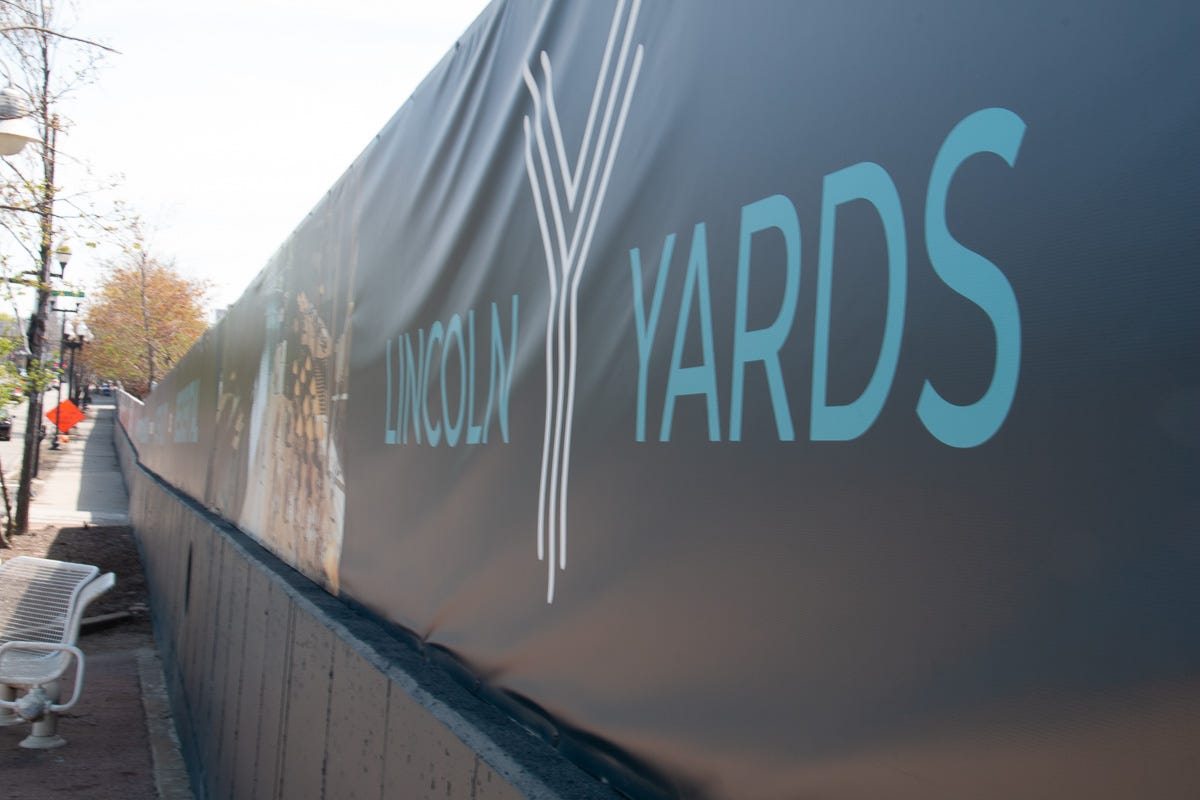
We’d meet as a group for coffee before each trip to discuss what we might focus on and some challenge Rino would give us. Hello Amy and Jackie! Two photographer friends I made in Chicago and we still chat.
Once on-site, we’d split up to explore individually. As we entered the neighborhood, and walked into the gates, the energy level rose dramatically. It was a very different setting—chaotic and alive with motion.
It all starts with what I like to call the ‘Goes-Inzas’ — short for the stuff that goes in. — inputs. Tractor trailers arrive stacked with crushed car frames and dump trucks unload materials from demolition and construction sites.
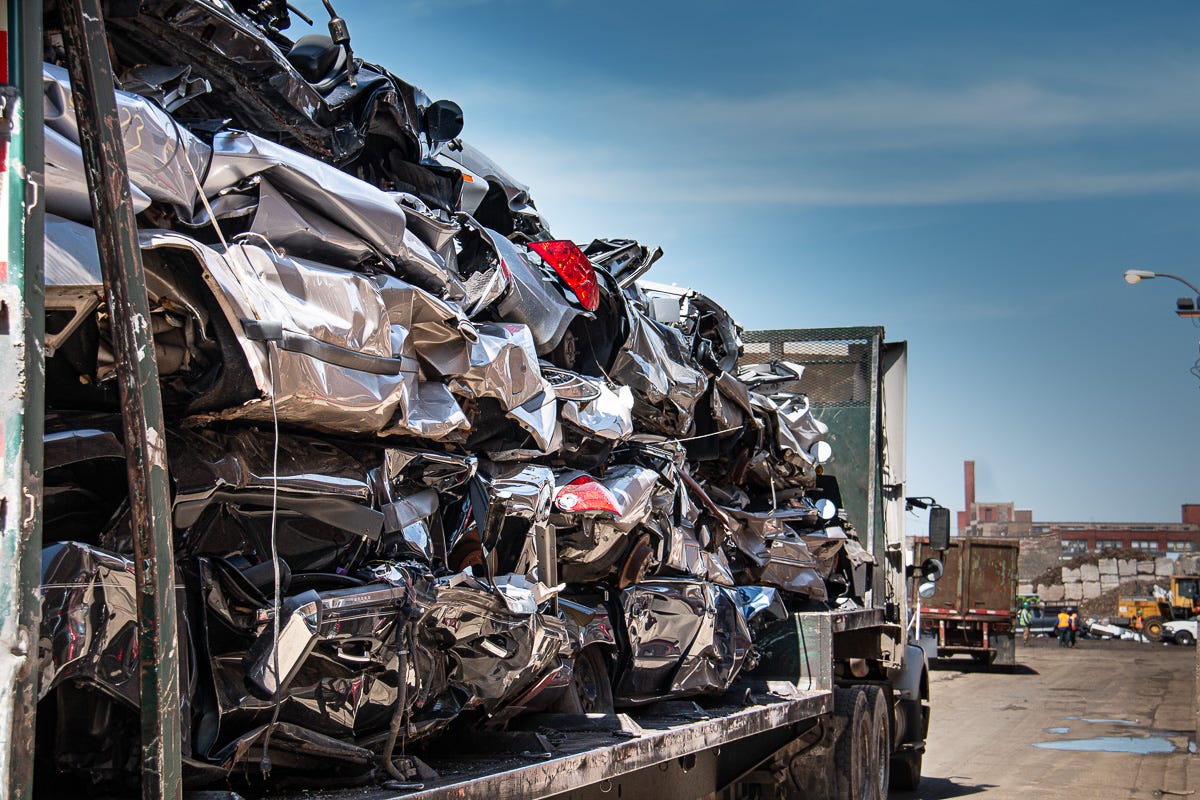
You’ll also see local scrap haulers showing up in decked-out pickup trucks, often carrying quirky or trophy-worthy finds from homes or small businesses.
It was fascinating to watch people weaving between traffic and piles of metal and scrap. Directing traffic and assisting in load deployment.
The traditional food trucks came to provision the drivers and employees in the yard. A needed respite in the heat and heavy work at hand. You really had to stay alert—people and machines were constantly crossing paths.
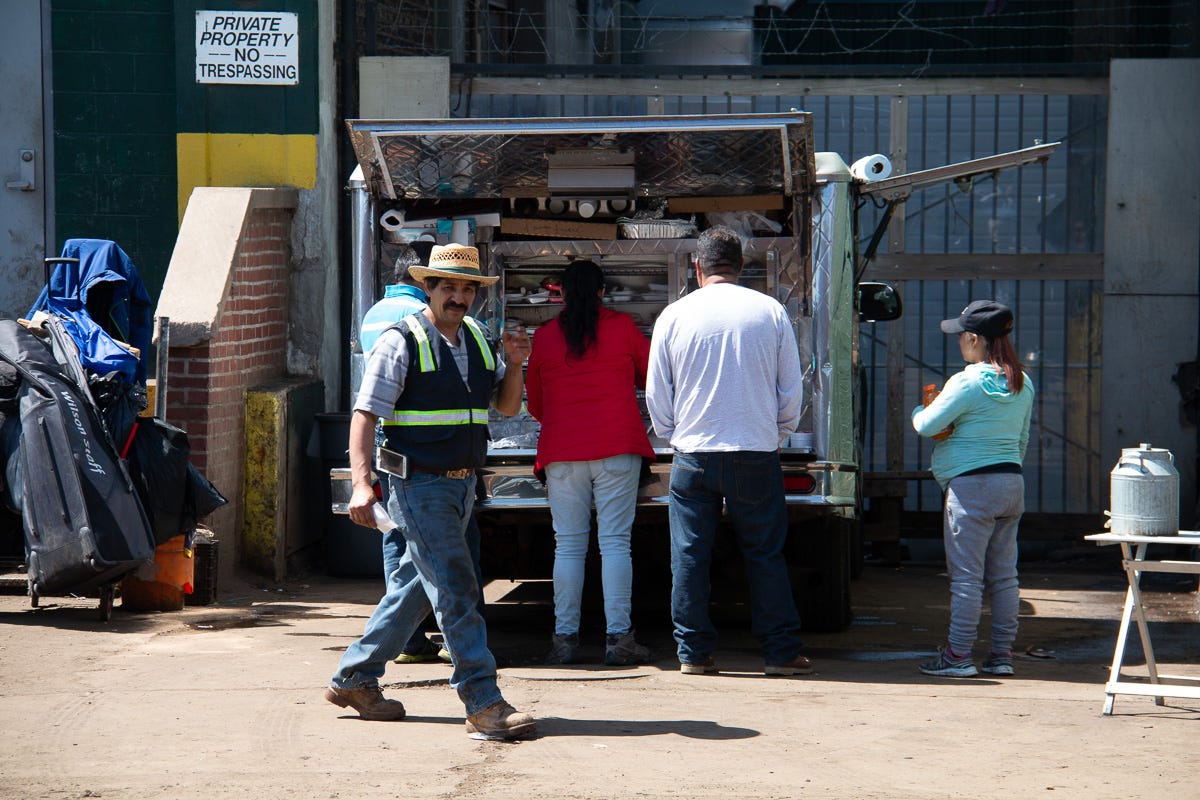
While staring at one of the largest metal heaps, what caught my eye was the dueling, dancing choreography of cranes with claws (very technical term). There was a funny, rhythm and they looked like they were competing for the best slice of the scrap pile.
A still photo doesn’t show action, but maybe you can feel it?
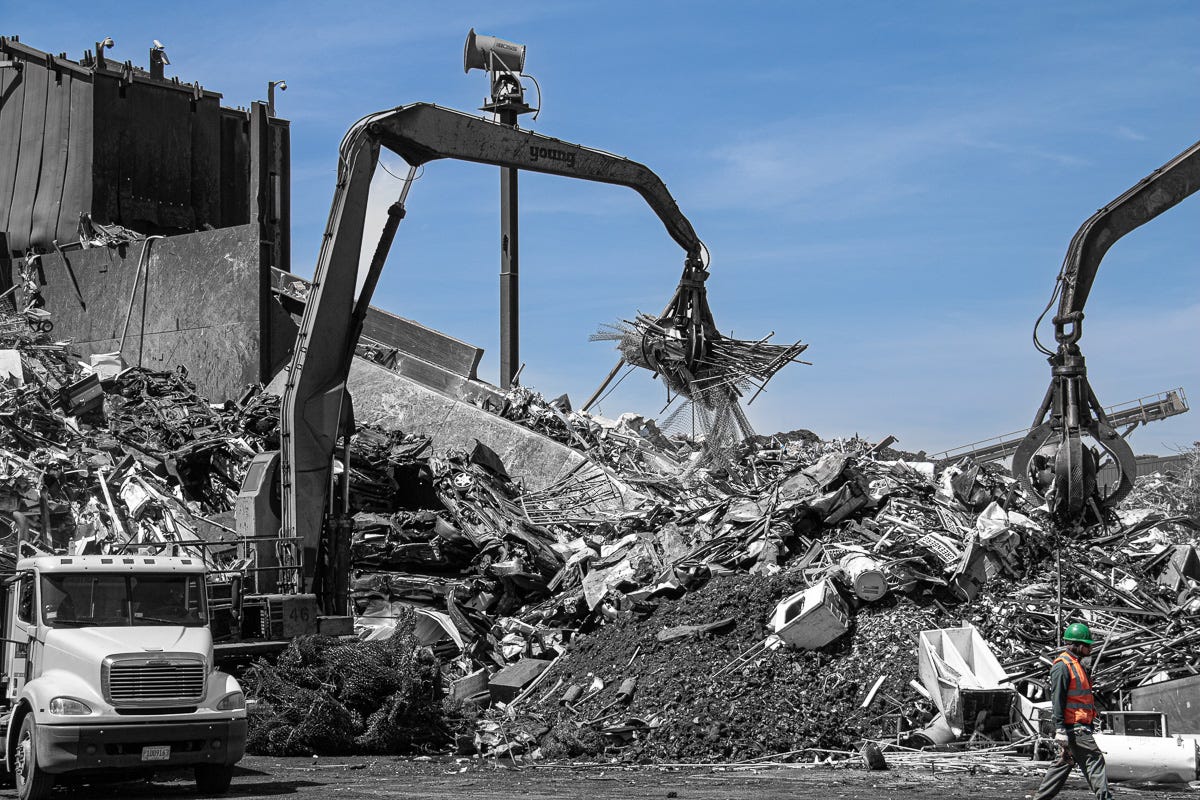
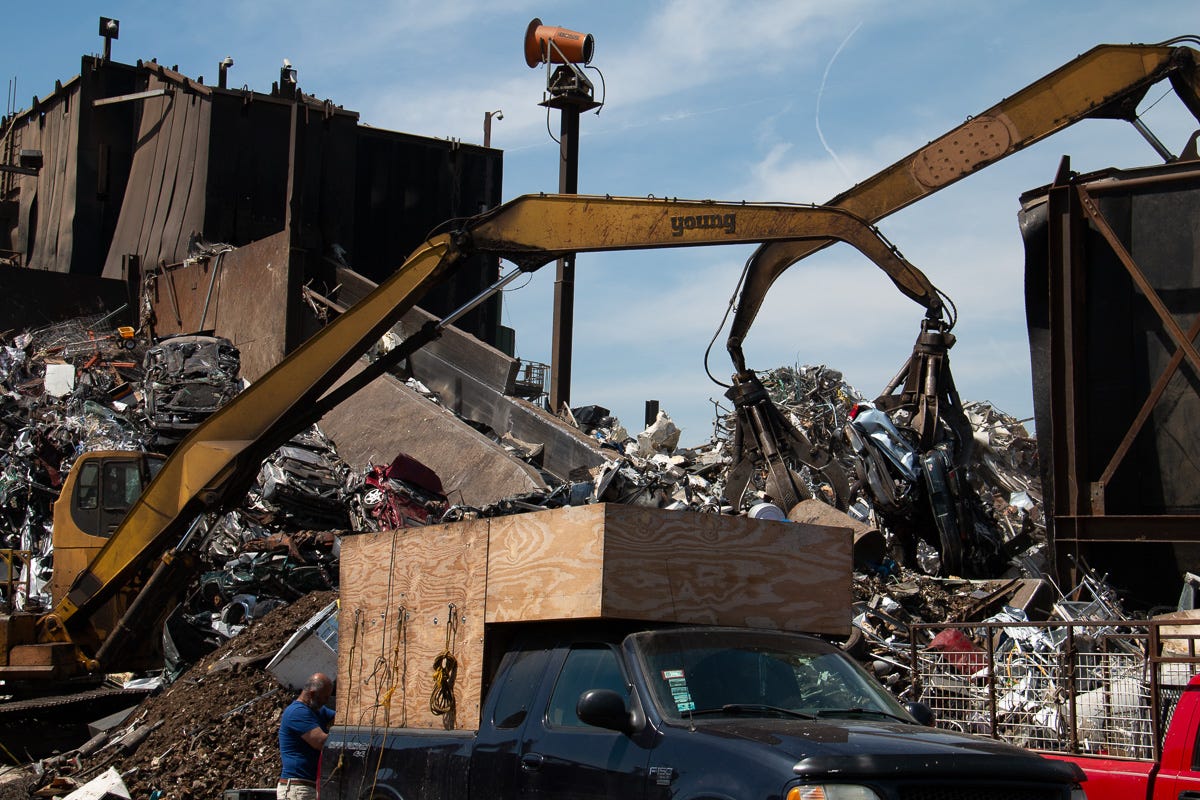
And then there were the large electro-magnets dangling from other cranes. Picking up car pieces and 10-20 foot tanks as if they were a paperclip.
And somehow I always zero in on oddities wherever I go. I have to photograph them. Even finding this sporty office chair, occupied by a relatively clean bear in front of a loading dock captures my imagination. You?
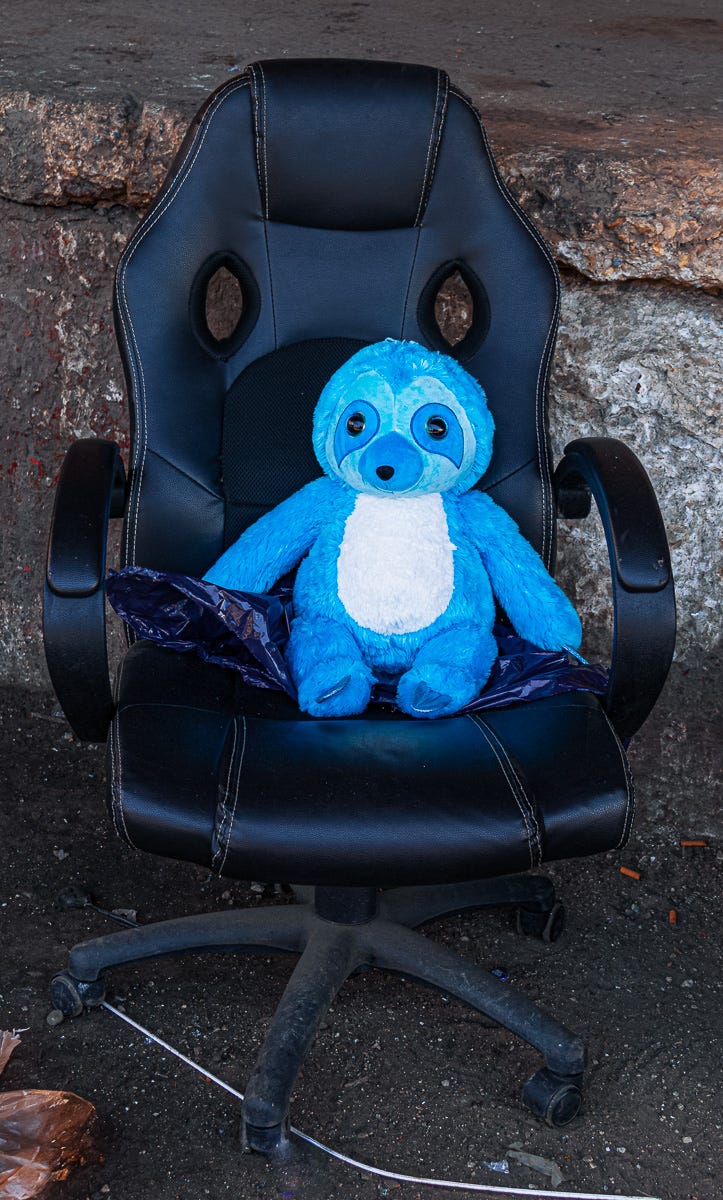
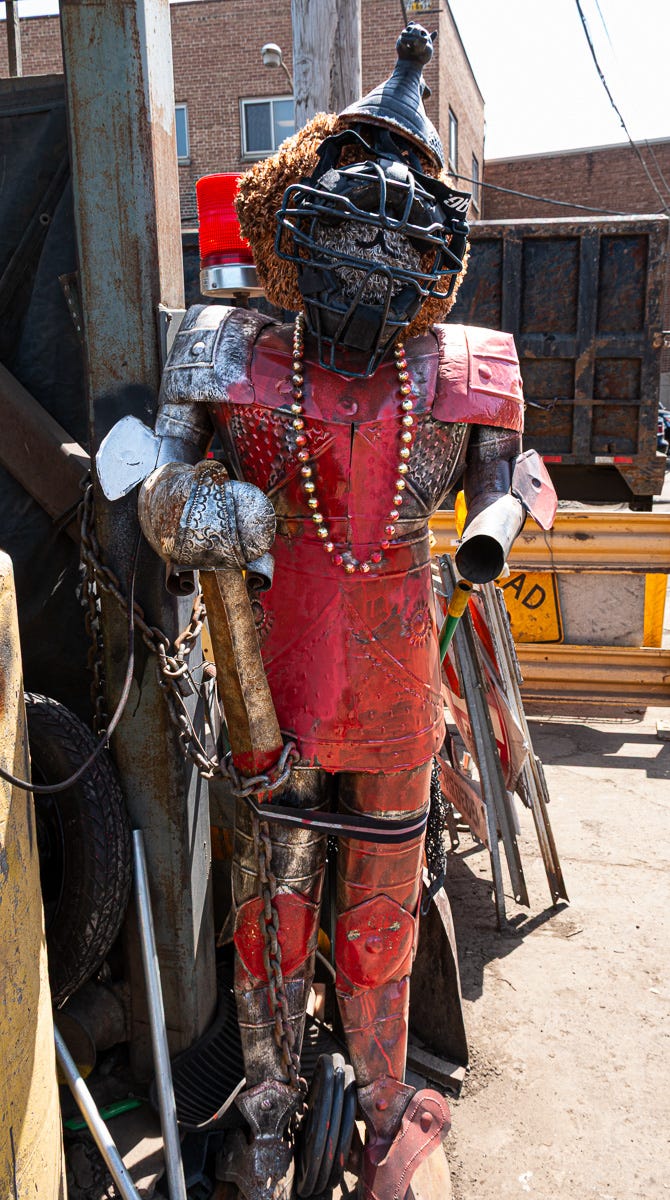
I am not quite sure, but the scarecrow was a creative marvel. What could it be for? Was there an artist in the midst or was there some function for it. Keeping the birds and crows away? All of us shot it from a variety of angles.
And, I do find signs from around the world to be entertaining. This is really emphatic, but reasonable.
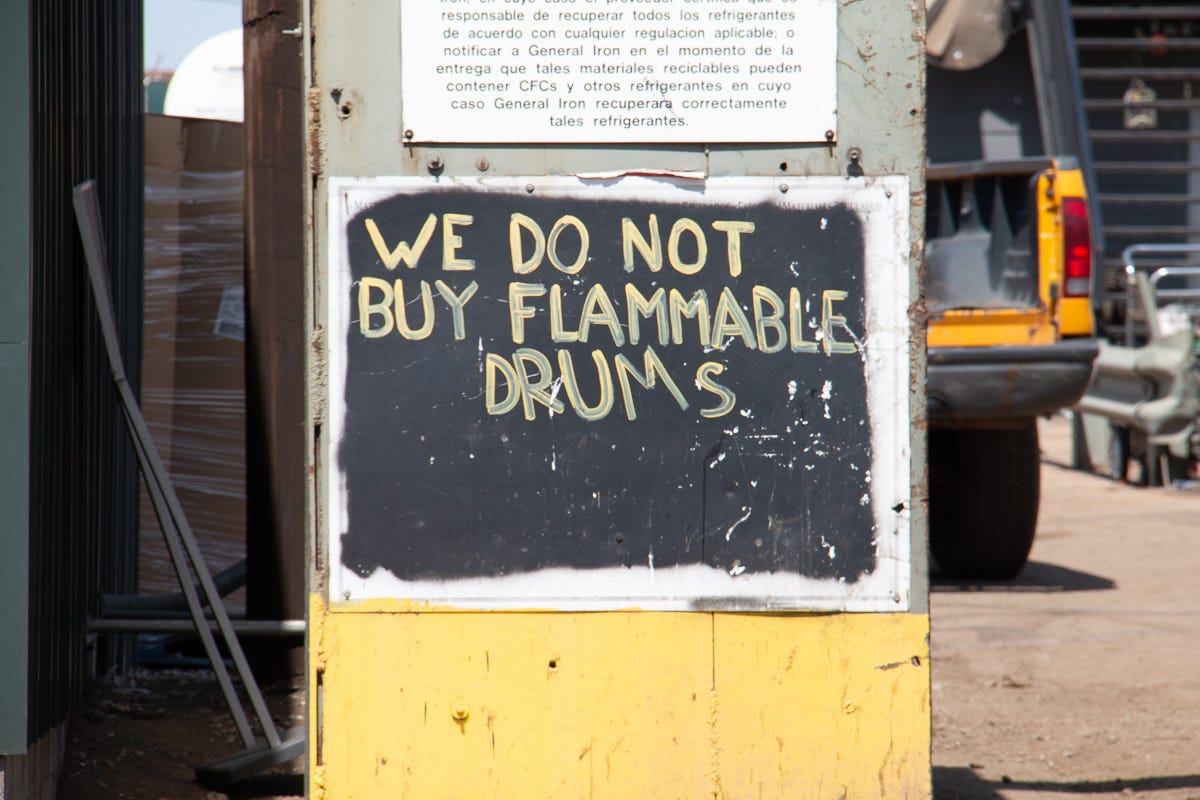
That concludes the images taken inside the yard. I thought I would show a few more shots on the way to and from the Lincoln Yards.
In Da Hood - Surrounding the Scrap Yard
I thought I would show a few more shots on the way to and from the Lincoln Yards. Here area handful of images that demonstrate the neighborhood vibe.
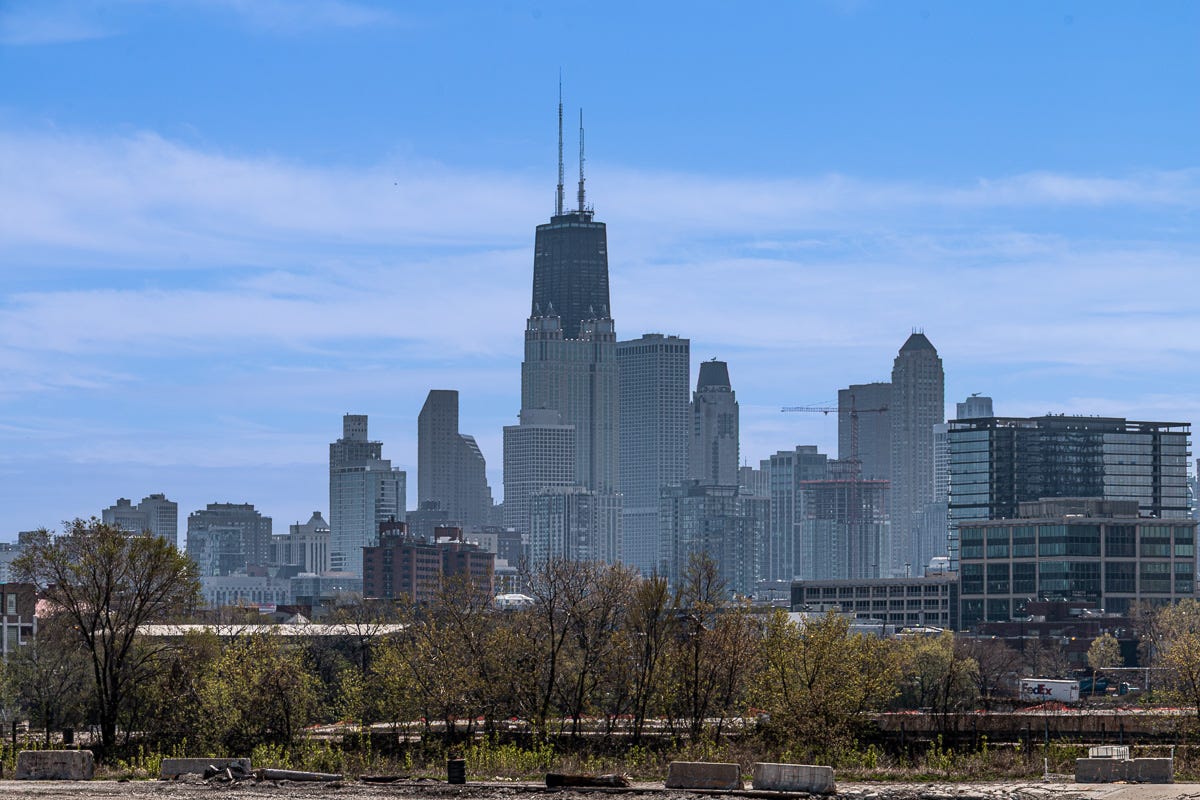
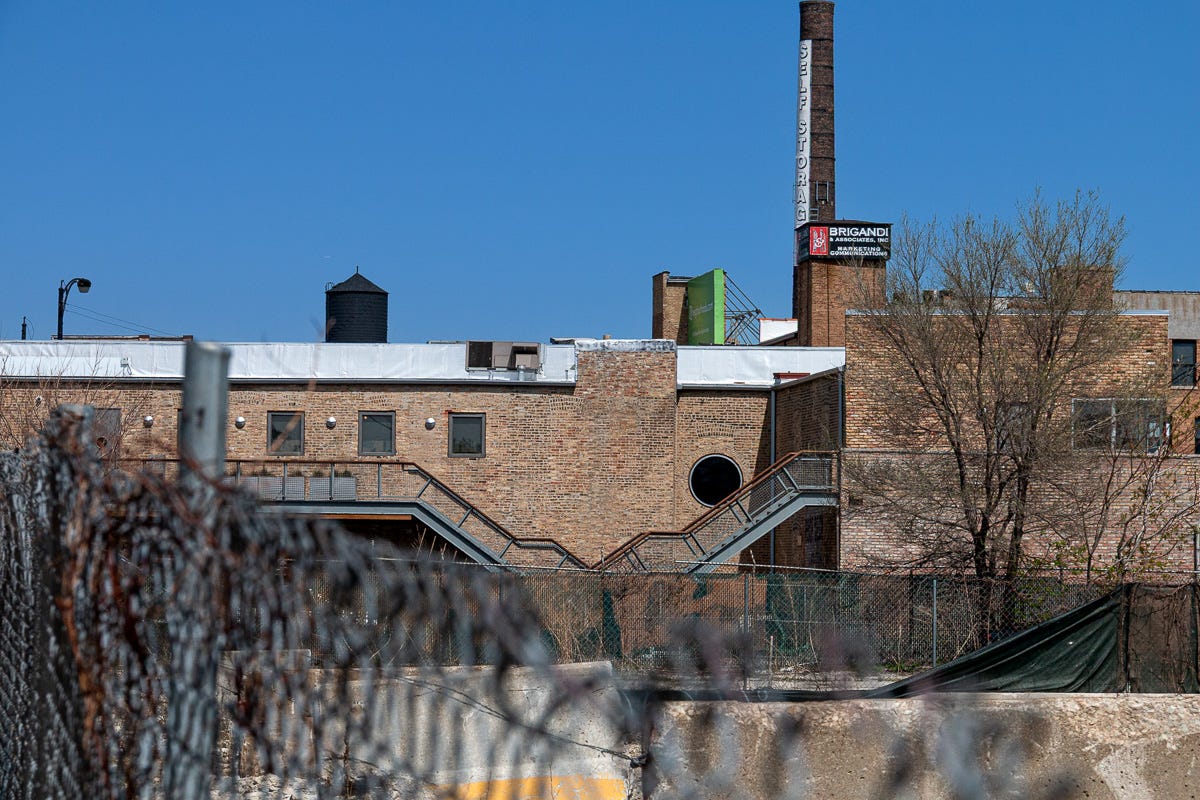
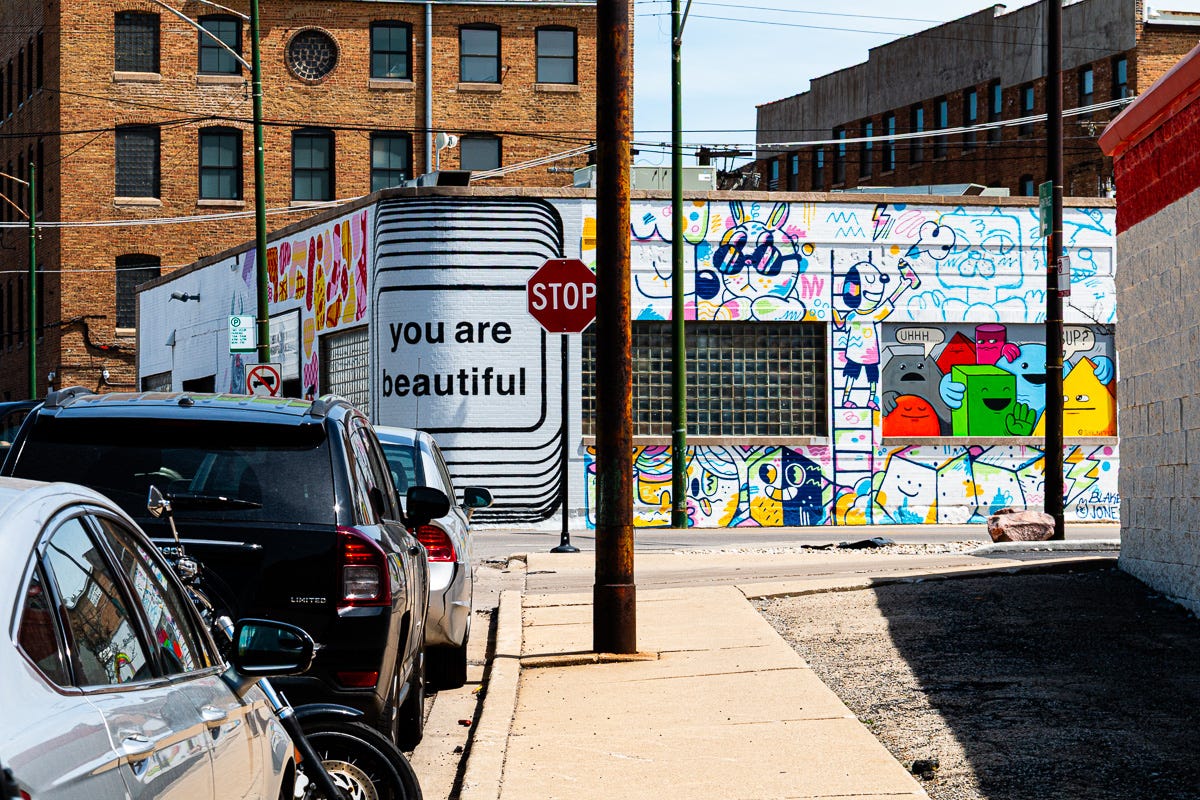
Even in 2016, I always gravitate to street photography and people shots. Just a man waiting for a bus.
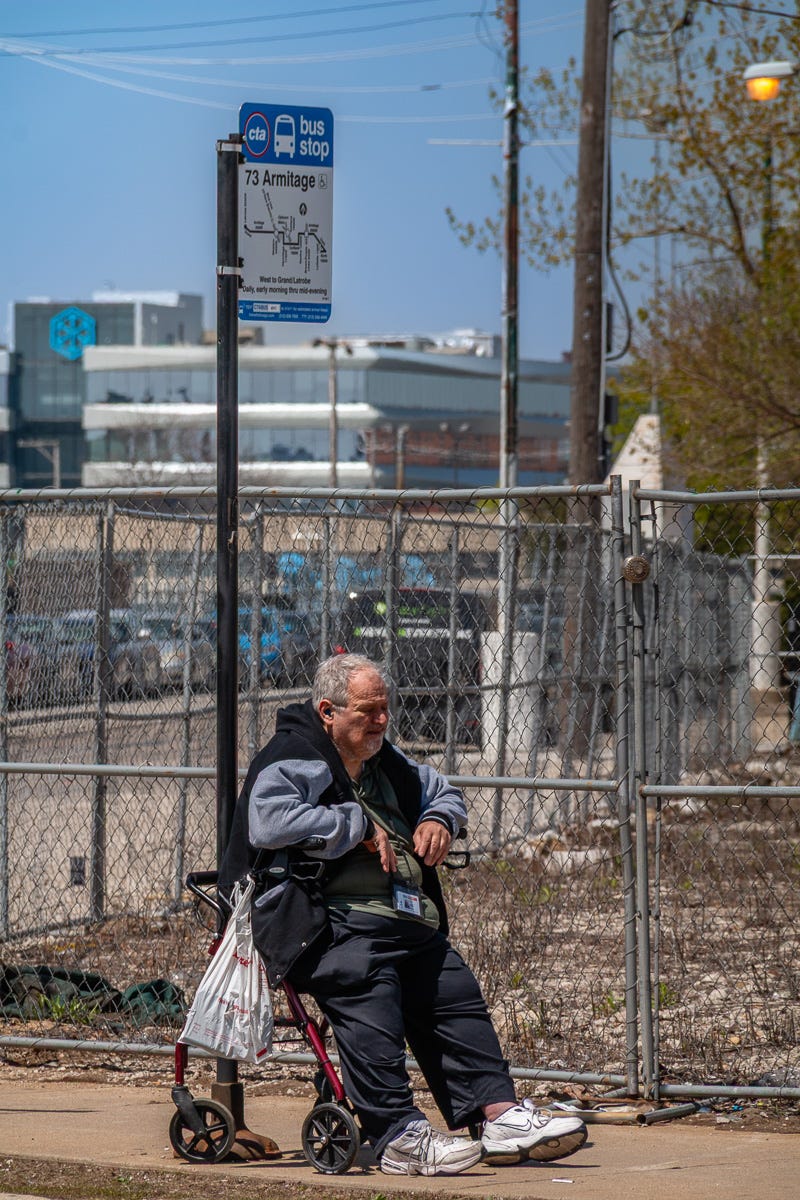
An unfortunate, but normal morose sight are the animals that are found lying and dying. This was not the first of the day, nor the last.
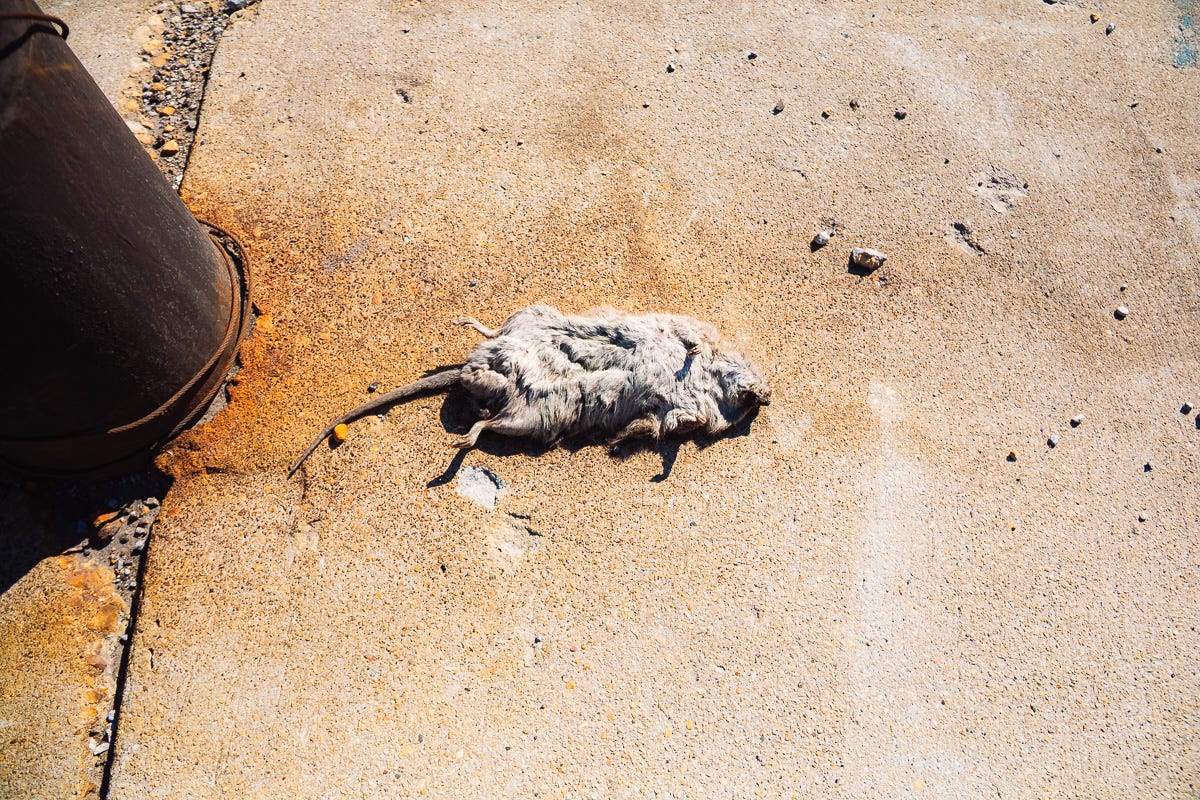
A Sidenote About Photowalks
The term Photowalk is commonly used in many of my posts. Whether I go out with a purpose or not, I consider it a Photowalk if I have a camera in hand. Before my pickleball mishap (did I mention I won’t be playing Pickleball anymore?), I was out doing Photowalks 2–3 times a week around Boston or wherever I traveled. Some days, I’d clock 10,000 to 30,000 steps without even noticing.
I first heard the term from one of the great photography sensei’s, Scott Kelby. If you don’t know him, he’s worth looking up. He founded the widely subscribed Photoshop User Magazine, was a key advisor on the design and function of Lightroom, and runs a photo community, Kelby One.
Scott created an annual event called the WorldWide Photowalk, which I attended for a few years about 10–15 years ago. Imagine thousands of photographers across the globe shooting in small groups on the same day. Each group would select their best shots and submit them for regional and global recognition. It was held last year, but I haven’t seen anything yet about 2025. In my current hobbled state, I might sit this year out.
Invite some fellow photographers and explore. It’s always a good time.
Lessons Learned 🧠
Shooting industrial spaces is endlessly interesting. You can find images in the small details — macro shots of materials, unusual objects, strange habits or behaviors — and in the energy of people interacting with massive, dangerous, and constantly moving machines.
Color versus Black & White: I am drawn to the rich colors, layered textures, and strong personalities found in these places. That said, some images just hit harder in black and white. I am still figuring that out and may never settle on a final answer… maybe it just depends.
Where Have All the People Gone?: I have noticed that a lot of industrial and urban photography is devoid of people. But in my experience, it is people who plan, design, choose, install, and operate these environments. Only recently have we started seeing true “lights-out” facilities — and those are digital, with no moving parts.
My Subjects Are Smiling: I keep noticing that the people I photograph — whether in industrial or office settings — are often smiling. Is that typical? Am I drawn to moments where people look like they are quietly celebrating something in their own minds while working? Even in my street photography, I find joy in seeing people in those calm, content, almost meditative states. Is that just what I tend to see… and capture? Should I also be seeking out the darker moments?
In Summary
I believe that developing your own style — your visual voice — is important to hobbyists through professionals. Its often what feels like a lonely process to not just be an imitator of others. It takes focus, self-awareness, continuous learning, and the courage to experiment. But I also highly recommend stepping out with others. Join a group, attend a workshop, explore with friends. Whether it’s an urban photowalk, a sports event, a news scene, or capturing moments at a wedding or graduation, doing it alongside others will help you grow — not just as a photographer, but as a person.
To me, it’s never just about the industrial setting, or even the walking and shooting — it’s about the experience of going on a photo hunt with like-minded people. I’ve been lucky to find classes, events, and friends who share this joy. Photowalks are a time to learn, observe, share, compete a little, and most importantly — to have fun and enjoy the moment.
And it doesn’t end when the shoot’s over. Culling, editing, choosing your “A” and “B” images — and sharing them with the same group — is always revealing. As trite as it may sound, I often think of the saying: “Put 100 photographers into a mono-color room and you’ll never see the same photo twice.” I love seeing what others saw, in the same place, at the same time. It’s endlessly inspiring.
Ok, its Your TURN! Ask me ANYTHING and Tell me:
Who will you be shooting with next?
What types of places do you go with others?
What do you learn and share when in photo groups?
DID YOU MAKE IT HERE? Please see my survey if you made it this far and tell me what you think.
Loved this post? Subscribe for more photowalk adventures!1
Copyright Stuff
All photographs and images were taken and produced by me, David Rosen. Feel free to share this post by linking to it, re-stacking, or creating notes to spread the word! The images may not be reproduced or distributed without my explicit permission. If you would like to use the photos—be glad to accommodate you. Please contact me at Click@davidrosenphoto.com. Thank you for supporting my work—subscribe or share to stay connected with my photography journey.



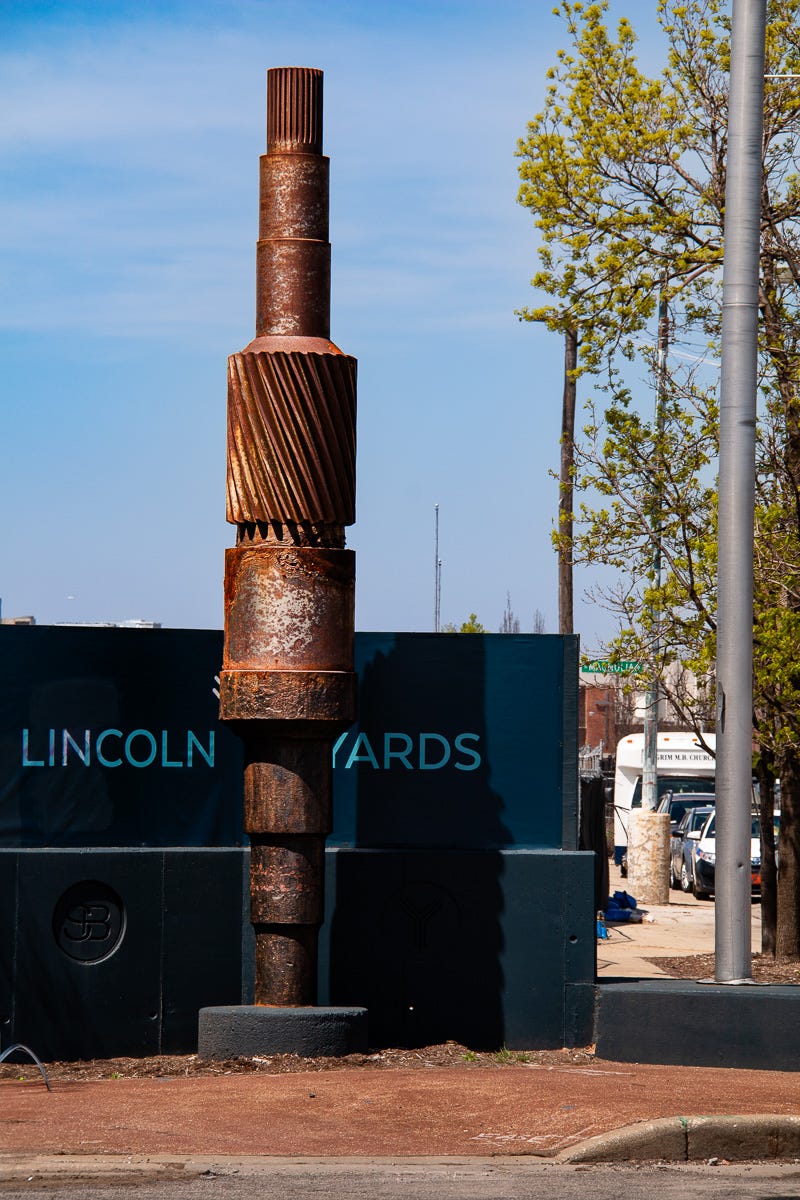
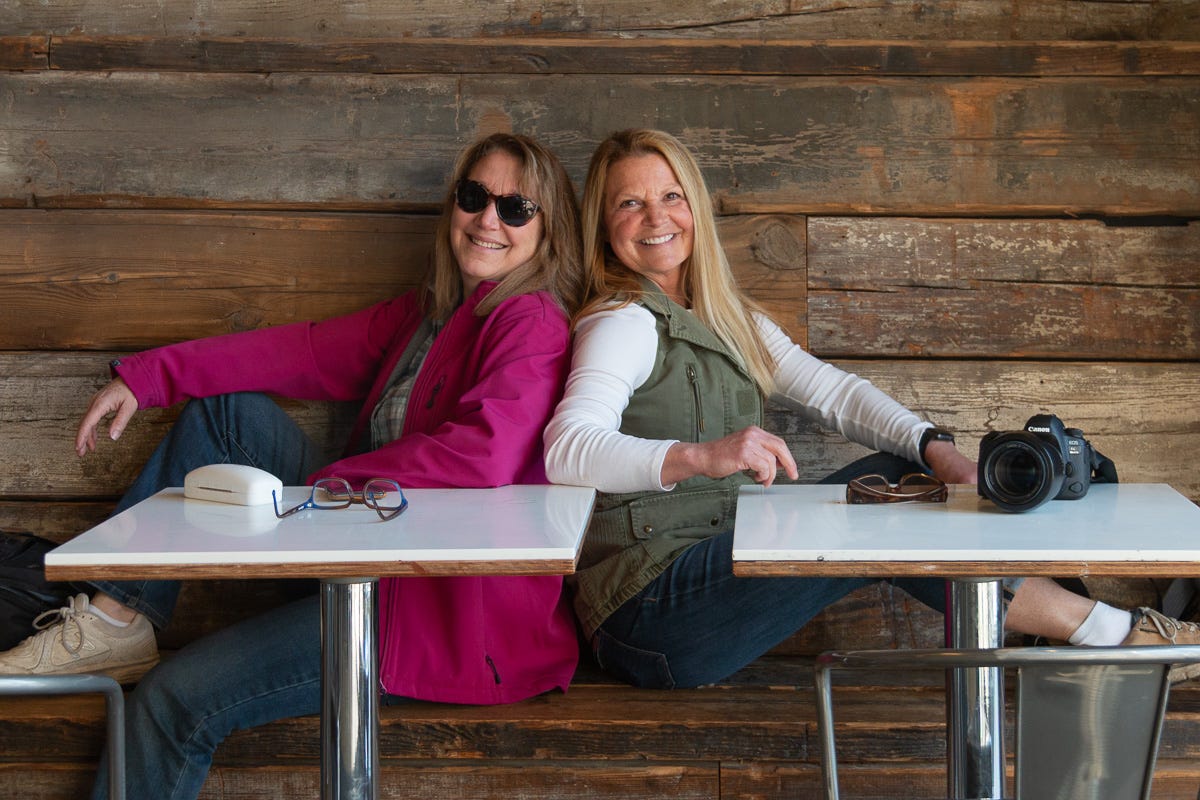
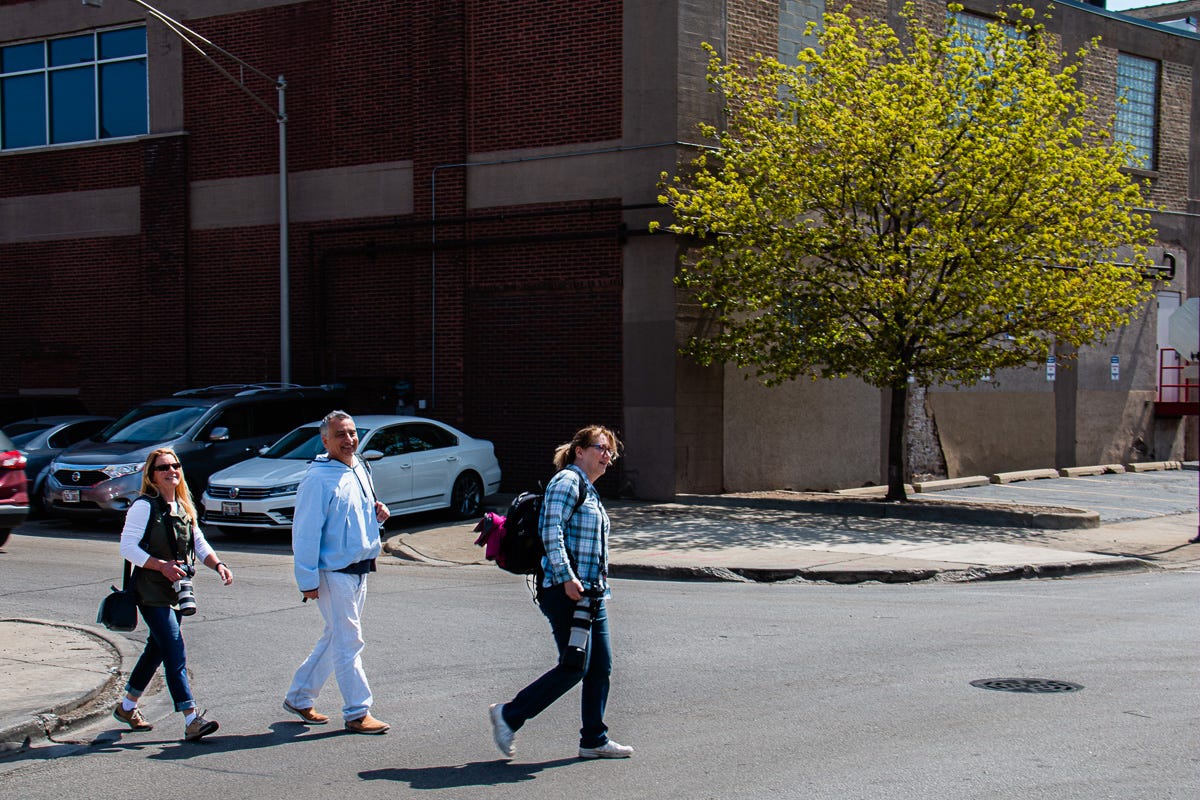
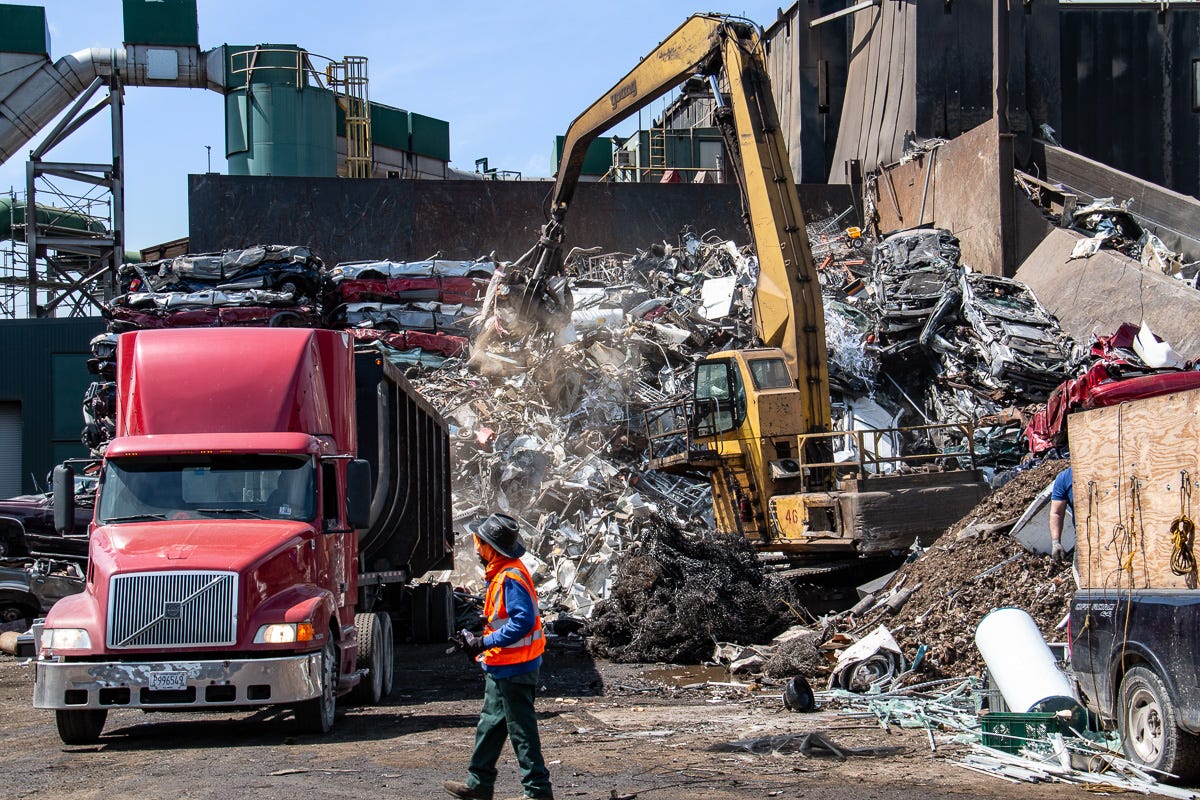
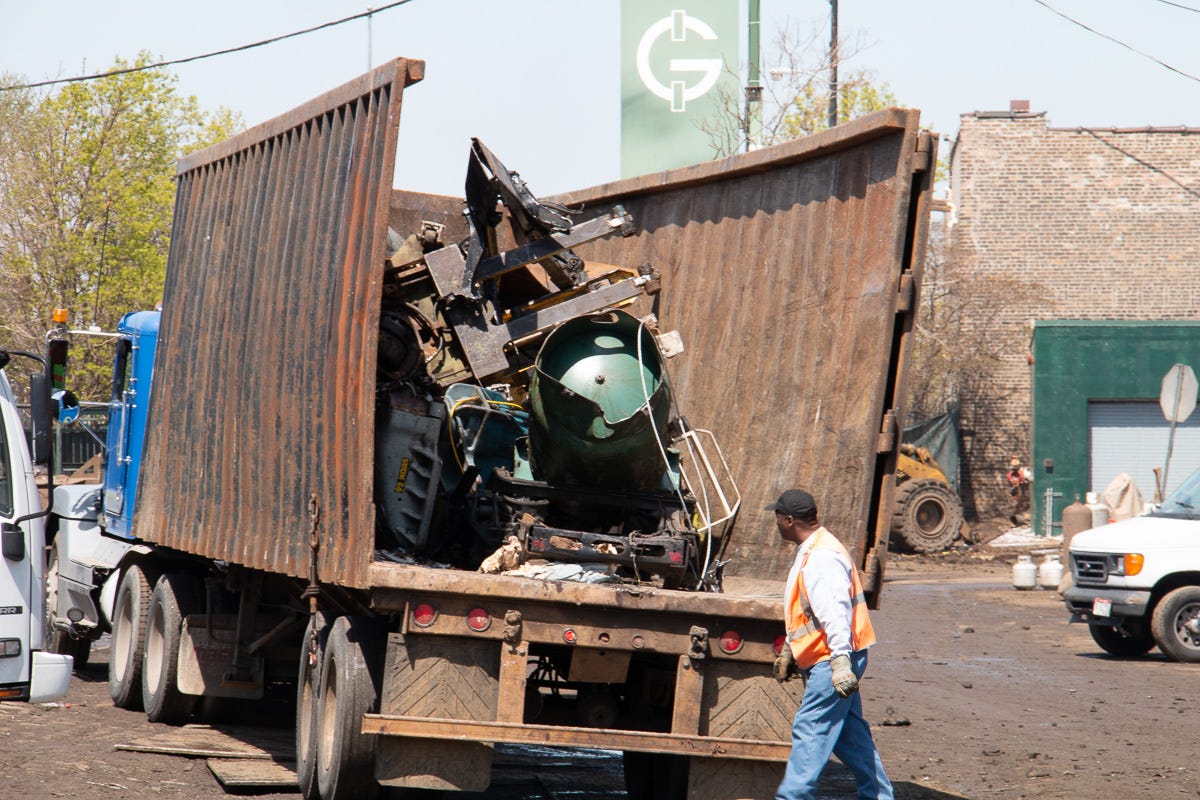
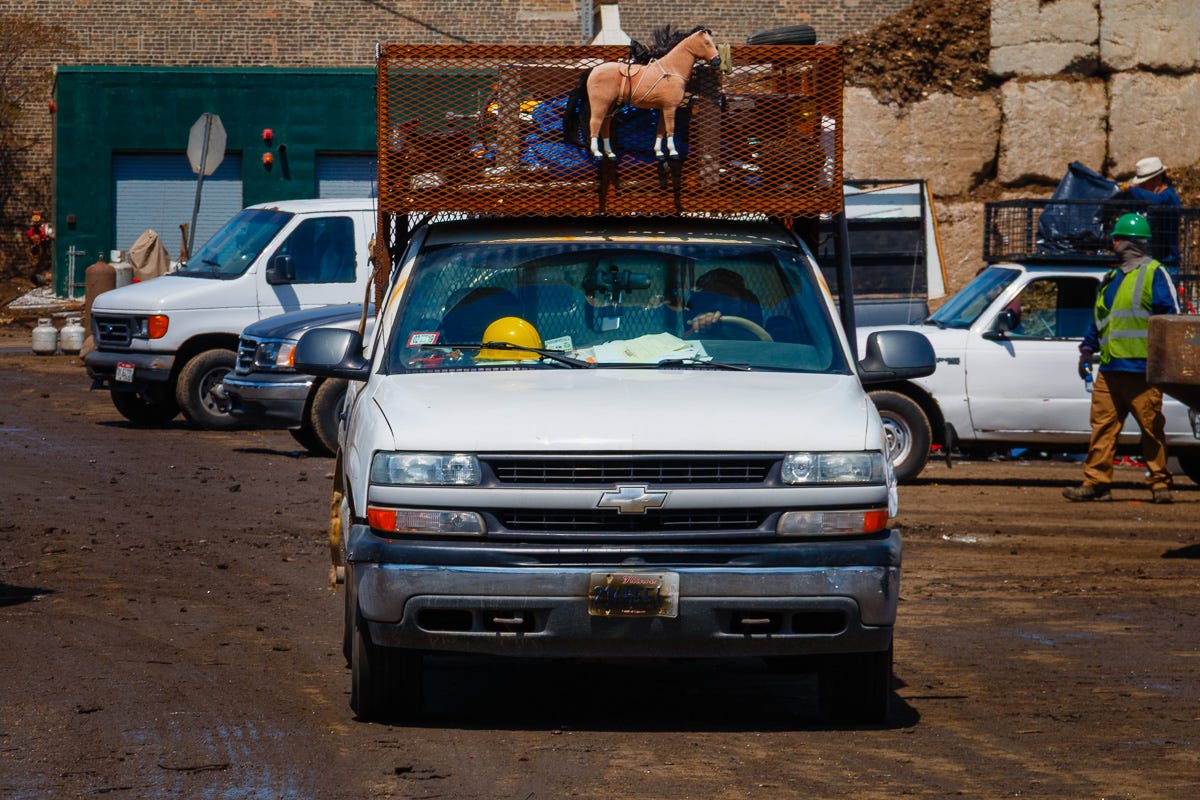
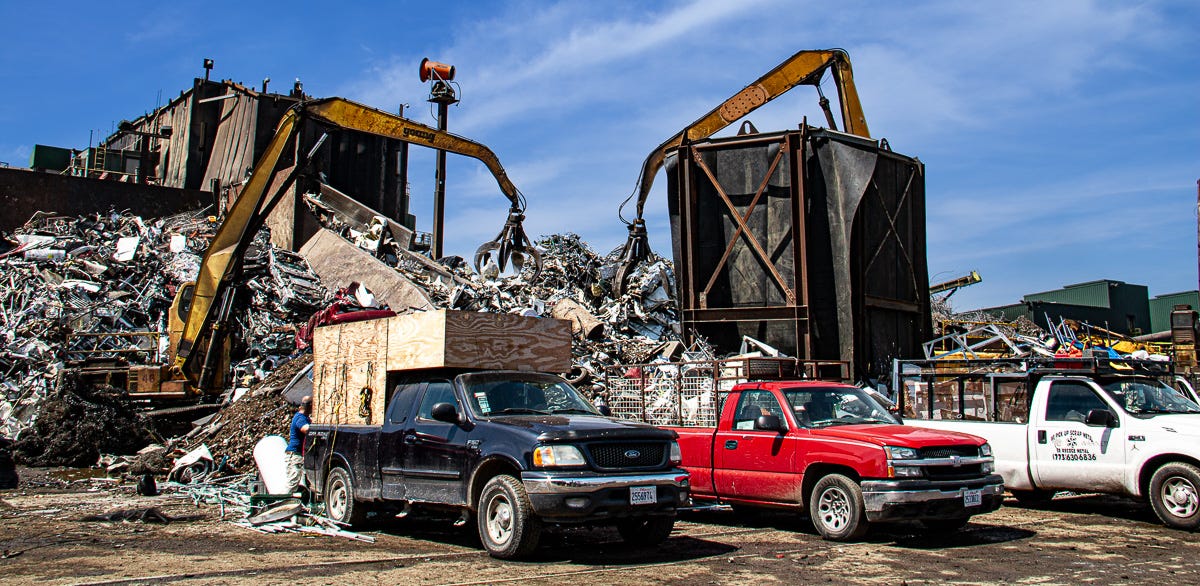
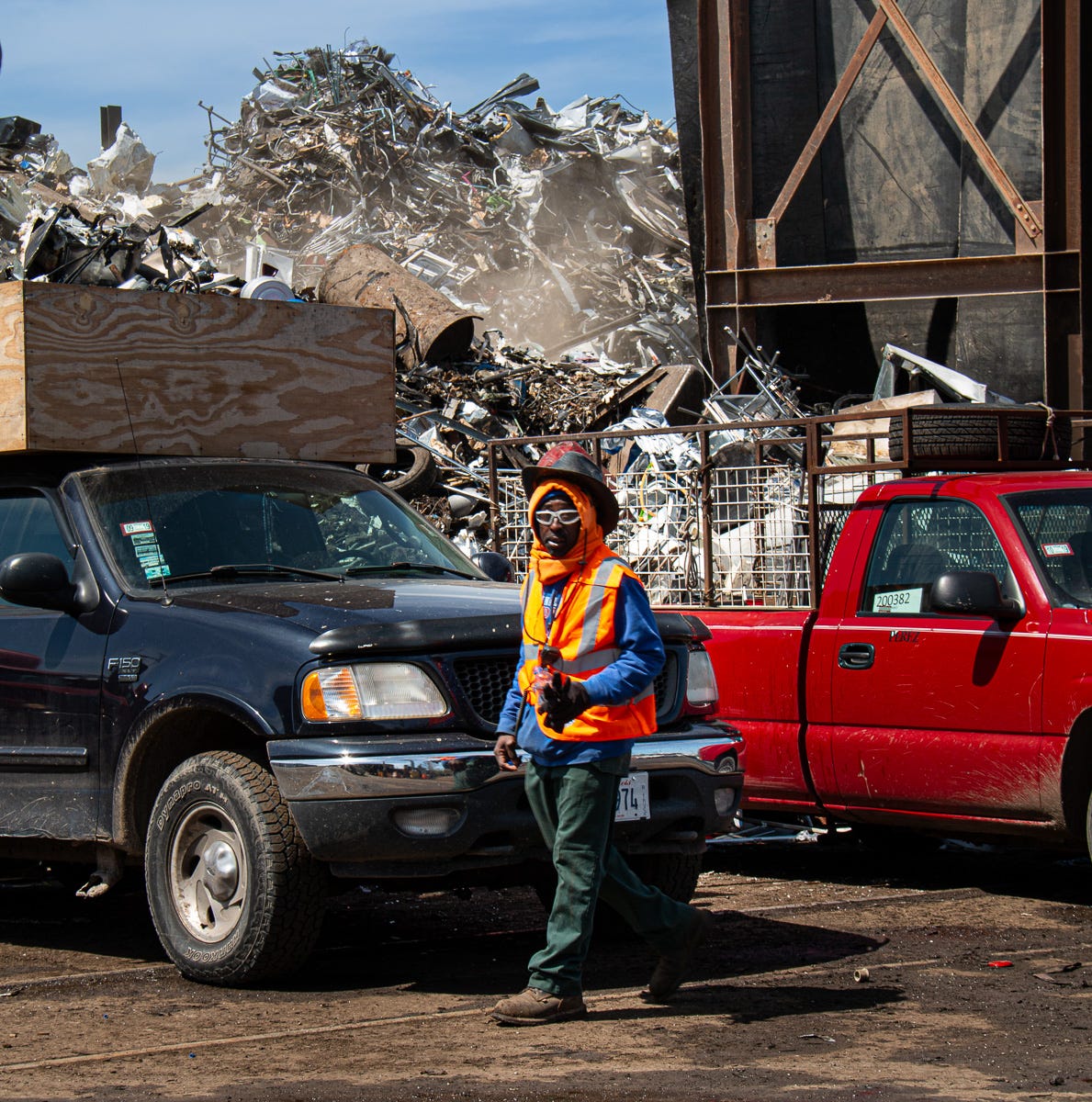
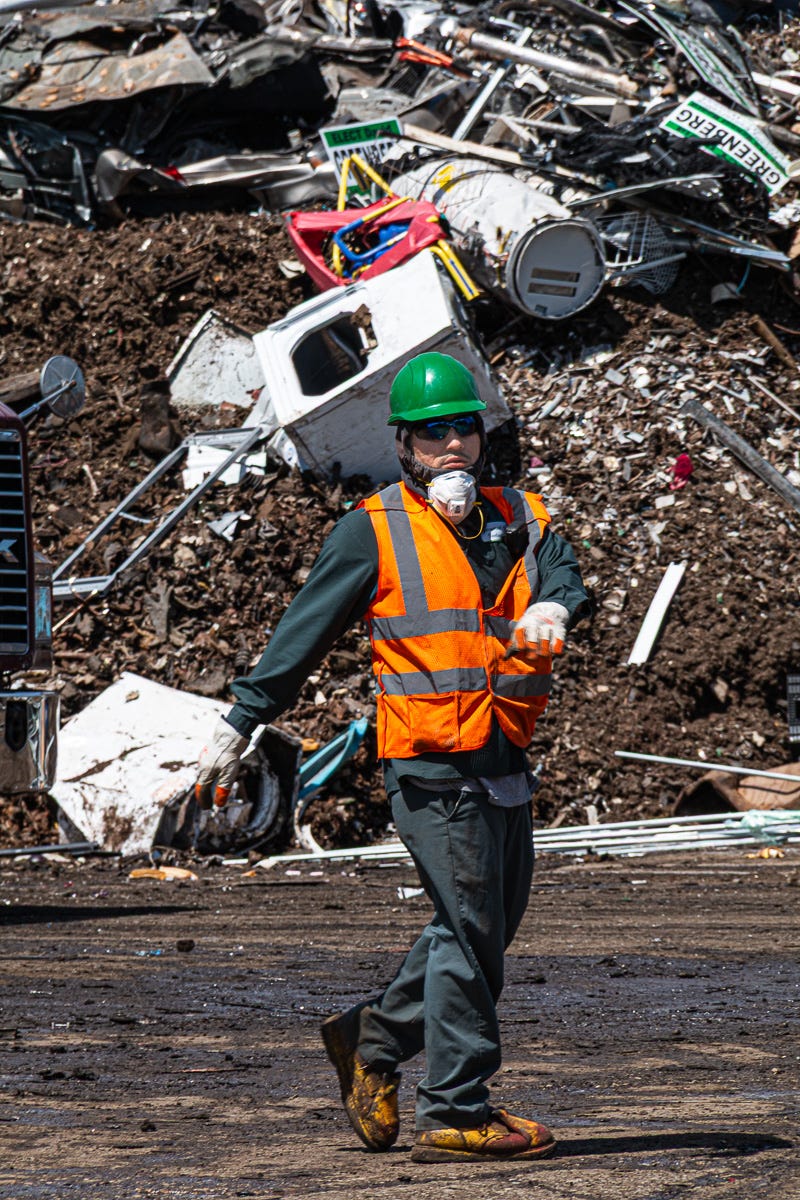
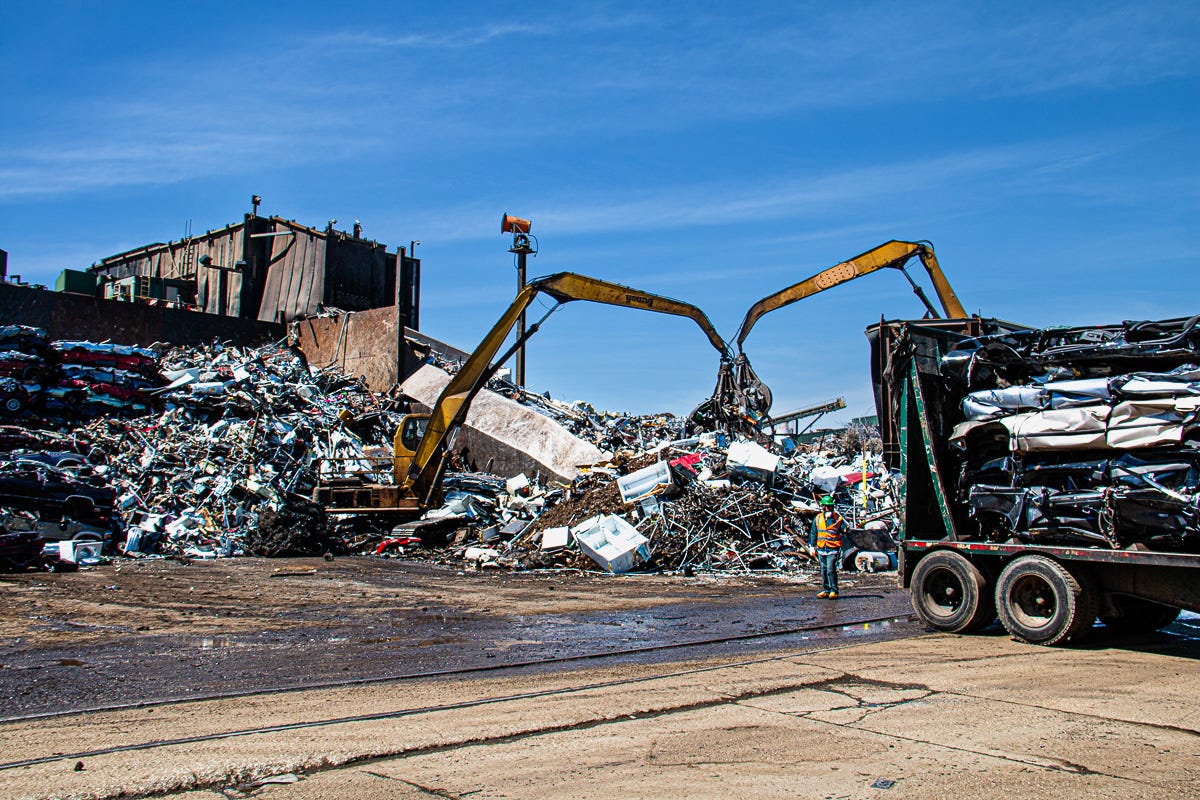
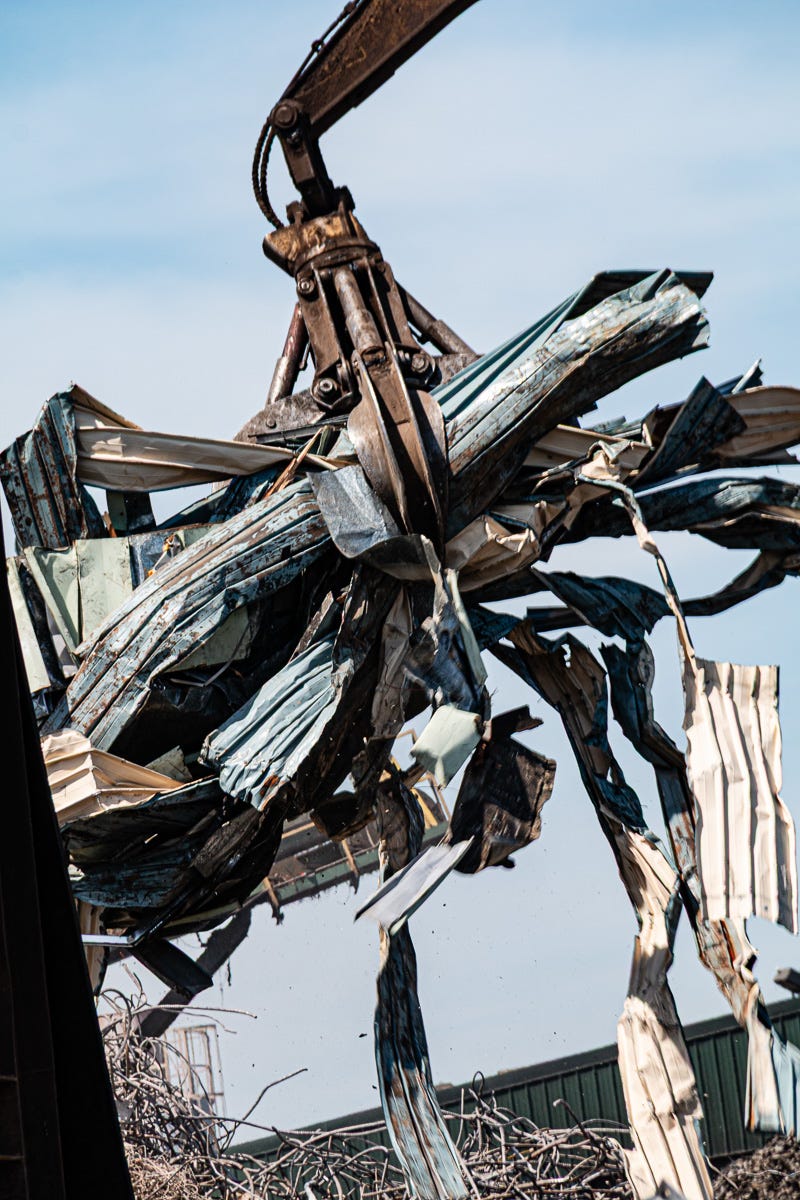
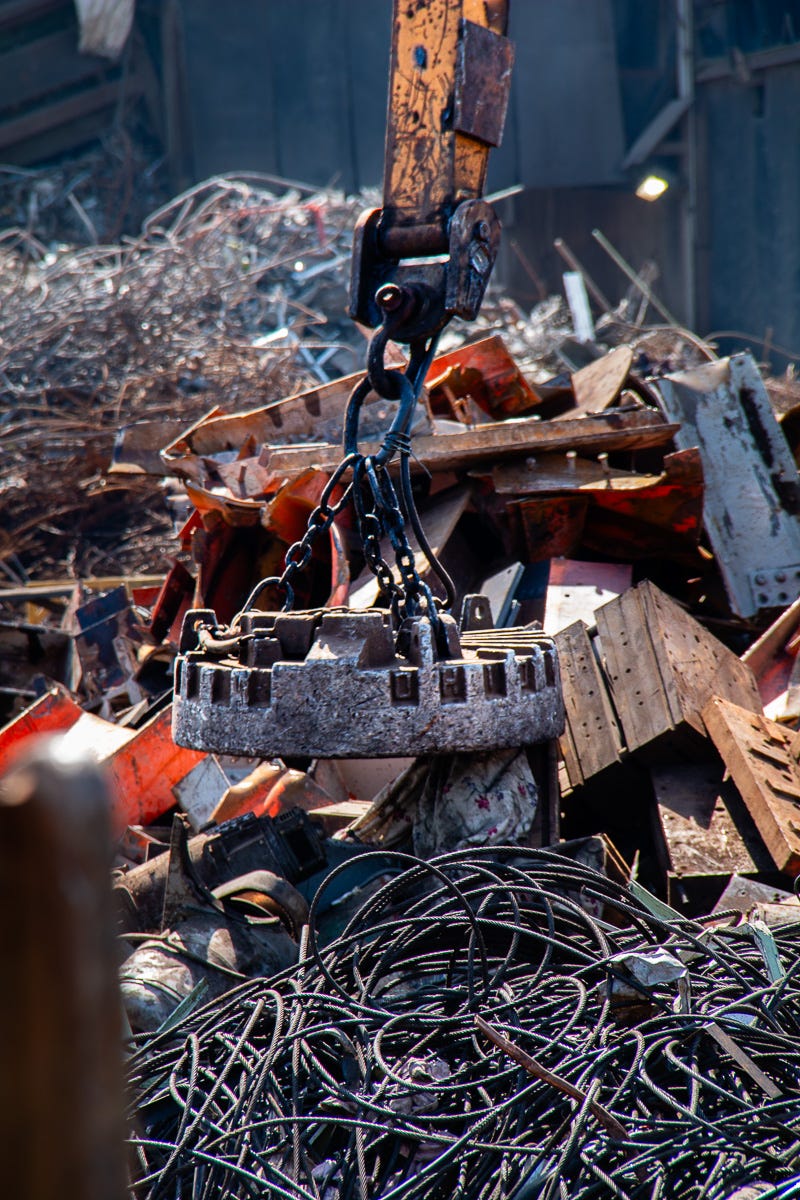
A lovely set of photos, David and description of your photowalk around the scrapyard. Looks like a wonderful location to explore with a camera. I used to work on a farm that ran right up to a scrapyard and know exactly what you mean about the dance of the machinery. Mesmerising at times.
The one with the mechanical claw grabbing the horizontal greenish metal rolls is very good. It looks like a giant animal grabbing a smaller one.